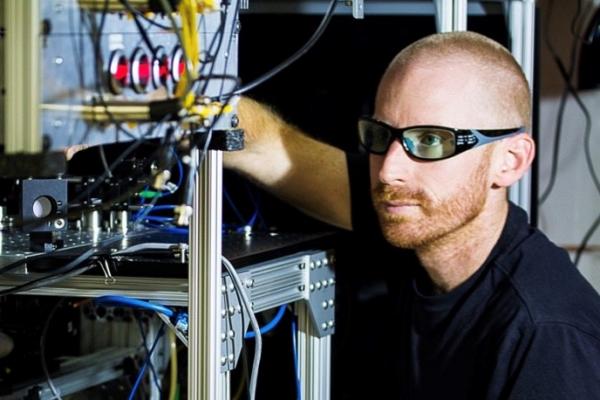
Floquet-engineering topological Dirac bands in an optical lattice
Dr. Ian B. Spielman
Fellow, Joint Quantum Institute
National Institute of Standards and Technology and the University of Maryland
Watch the recording
Faculty Host: Tin-Lun (Jason) Ho

Abstract: Over the years my group has performed a number of experiments realizing relativistic physics using cold atoms — described by the 1D Dirac Hamiltonian in some degree of approximation. I will begin by reviewing these results in conjunction with those from the whole of the cold-atom community.
With that backdrop, I describe a spin dependent bipartite Floquet lattice, in which the dispersion relation is linear for all points in the Brillouin zone. The (stroboscopic) Floquet spectrum of our periodically-driven Hamiltonian features perfect spin-momentum locking, and a linear Dirac dispersion. These bands are protected by a Floquet topological invariant which we directly measure by using quantum state tomography.
More about Dr. Spielman:
Ian B. Spielman is a Fellow of the Joint Quantum Institute (JQI), a joint research institute between the National Institute of Standards and Technology (NIST) and the University of Maryland (UMd). A member of the NIST technical staff since 2006, in 2014 Spielman was appointed as a “NIST Fellow” (of NIST’s 1,800 member technical staff, just 40 are NIST fellows).
Spielman is an experimentalist in atomic, molecular and optical physics but was trained as a condensed matter physicist during his Ph.D. at Caltech from 1998 to 2004. Spielman’s research centers using ultracold-atom systems – just 10’s of nano-Kelvin above absolute zero – to realize the many-body phenomena so common in conventional materials. He has pioneered techniques to add artificial magnetic fields and spin-orbit coupling to cold-atom systems opening the door for new many-body systems. Spielman has received many awards on account of this research including the 2015 APS I.I. Rabi Prize in Atomic, Molecular, and Optical Physics.
